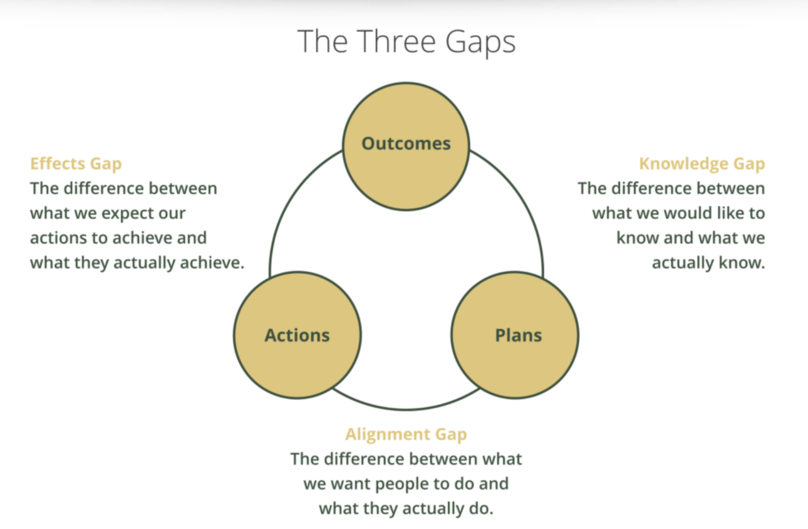Photo by fauxels from Pexels
“Escaping the build trap By Melissa Perri” is always on the list of must-read books for Product Managers.
This blog is the third part of my book summary. You can find the first part here and the second part here.
What is Strategy?
Strategy is a deployable decision-making framework that enables a team to take action to achieve desired outcomes within the constraints of the current capabilities.
A good strategy is not a detailed plan, it is a framework that helps you make decisions. Most often strategy is thought of as a list of stakeholders’ wishlist of features and a plan to accomplish these features. Thinking of strategy as a plan and committing to that is what gets us into the build trap. We commit to a list of features without validating if it is the right time to build.
A good strategy should sustain an organization for years.
Strategic Gaps
 |
|---|
| https://www.stephenbungay.com/ExecutingStrategy |
The author refers to Stephen Bungay’s theory on the Art of action to describe the frictions that appear in organizations; these gaps are described below.
| Type of gap | What is it? | How organizations try to fill the gap | Right course of action |
|---|---|---|---|
| Knowledge Gap | Gap between what the management would like to know and what the company actually knows | Seeking more detailed information | Upper mgmt should define and communicate the strategic intent (outcomes the company wants to achieve). |
| Alignment Gap | Gap between what people do and what mgmt wants them to do (which is to achieve business goals) | Providing more detailed information | Organizations should align every level around the why and should give the next layer down the opportunity to figure out the how and report back |
| Effects Gap | Gap between what we expect our actions to achieve and what actually happens | Putting more controls in place | Give individuals the freedom to adjust their actions to achieve goals |
An organization scales by having a coherent strategic framework and having autonomous teams make decisions without a lot of management oversight.
Some key concepts
Strategy deployment is about providing the right level of goals and objectives to teams so that they are given appropriate constraints to make decisions. OKRs is an example of a method used by Google for strategy deployment.
Strategy creation is the act of figuring out the direction of the company and developing a framework that will enable teams to make decisions.
Strategic intent communicates the company’s current area of focus that will help it achieve its vision in the future. The question the strategic intent answers is “What is the most important thing we can do to reach our vision, based on where we are now?”.
Product initiatives are derived from strategic intent. Product initiatives are solutions that the product team explores to achieve the goals mentioned in the strategic intent.
Product vision describes how a product will provide value to the customer. An example of product vision done well is the internal press release document created by Amazon employees; this document describes the customer problem and how the solution will solve the problem.
Hope you found these notes helpful. You can find the first part of this book summary here and the second part here.
Thanks for reading.